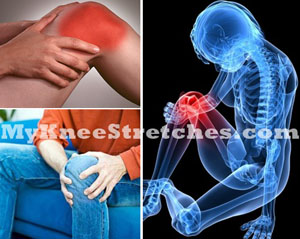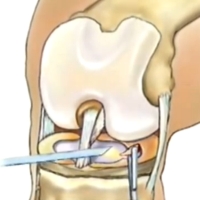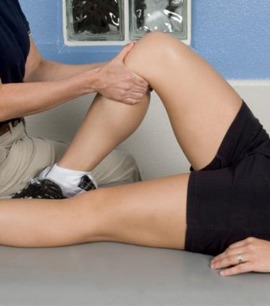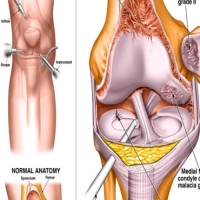Knee pain is quite common in the United States. Athletes in particular are more predisposed to knee problems (more than half of active athletes experience it every year). This is largely due to the fact that such pain in the knee is caused by overuse of the knee, sudden injury, as well as various underlying conditions, including arthritis.
The complexity of a knee joint is that any harm to various types of tissues found within it could easily lead to pain. These include cartilage tears, as well as torn or swollen ligaments. Hence, a variety of conditions can lead to mild or severe knee pain. Here are 5 common causes of knee pain.
Most Common Causes of Knee Pain
Osteochondritis Dissecans (OCD)
This is a condition characterized by lack of blood supply to a particular bone area beneath a joint surface, especially within the knee joint. Such restricted blood supply leads to a gradual loosening of the affected bone, as well as its cartilage covering. Inevitably, this leads to pain.
Certain unrecognized knee injuries or tiny fractures damaging the overlying cartilage, are likely to osteochondritis dissecans. Slight blockages of small arteries can also contribute to this condition. In case of such injuries, tiny fractures and blockages don’t heal normally. Cartilage within the affected areas separate from the bone and broken fragments may lodge into the knee joint. This causes sharp knee pain, locking of the joint and weakness.
Osteochondritis dissecans is predominant among active adolescents and young adults. It can also lead to development of osteoarthritis in future. Moreover, an absence of blood supply can further cause bone break down – a condition known as osteonecrosis.
In cases where osteochondritis dissecans affect several members of one family, it is likely an inherited disorder. Involvement of several other joints apart from the knee could also mean that it is an inherited disorder.
Bursitis
A bursa is a fluid sac within the knee that cushions and protects the joint. Actually, the knee has several fluid sacs within it. Hence, bursitis is a term referring to pain and swelling caused by irritation to the bursa through overuse, knee injuries, falls and repeated bending.
Various types of bursitis may occur depending on the cause of injury or location of the affected bursa. These include:
- Preacher’s knee and “housemaid knee” which are often caused by prolonged kneeling
- Baker’s cyst is the common cause of posterior knee pain due to swelling of one of the bursa located in the back of the knee (may result from injuries or conditions such as arthritis)

Knee Pain
Iliotibial Band Syndrome (ITBS)
This is a disease that mostly causes of knee pain mostly in runners. An iliotibial band is simply a tough tissue running from the hip region, past the knee joint and down to the shin. Therefore, iliotibial band syndrome is characterized by inflammation of the iliotibial band when it rubs against the outer knee bone (lateral condyle).
Runners are particularly predisposed to iliotibial band syndrome, since it is mostly caused by the long-term overuse which is common in sports training. However, knee pain may also occur due to iliotibial band syndrome caused by direct knee injuries.
Knee joint pain related to iliotibial band syndrome is characterized by a burning sensation or an ache at the sides of the knee joint during activity. Such pain can either remain localized around the knee area or spread further up to the thigh. Although you may have normal knee motion without any evident swelling, you may experience a snap while bending and straightening your knee.
Osgood-Schlatter Disease (OSD)
This is a disease that acts as a main cause of knee pain in active young people, especially boys aged from 10 to 15 years who frequently participate in running and jumping sports and games. This is because osgood-schlatter disease (OSD) occurs due to repetitive tension or stress on the apophysis. Apophysis is a section of the growth area within the upper tibia (commonly known as the shin bone). Osgood-schlatter disease may also occur due to knee injuries involving stretching of the tendon in the joint area to such an extent that it pulls out from the tibia while breaking off bone fragments.
Osgood-schlatter disease normally leads to tendon inflammation, as well as inflammation of soft tissue around the point of attachment of the tendon with the tibia. Knee pain is usually experienced at a point below the joint and it worsens during activity, but can be relieved by resting. Although knee motion usually remains unaffected, you may experience a particularly painful sensation if you press on a bony bump that appears on the upper end of the shin bone – beneath the kneecap. Generally, such pain recurs until completion of a child’s growth, but it may last a few months at a time.
Osteoarthritis (OA) and Rheumatoid Arthritis (RA)
This is a disease that causes knee pain mostly in people over the age of 60. Various forms of arthritis may lead to knee pain in different groups of people. Two key forms include: osteoarthritis and rheumatoid arthritis.
Osteoarthritis
Osteoarthritis is characterized by gradual wearing away of cartilage and related changes to the adjacent bone within the knee joint area. This disease may occur due to overweight issues or knee injuries. People aged 50 years and above are mostly affected; hence it is generally associated with aging. In cases where a younger person is affected by this ailment, it is most likely that the person inherited the disease or suffered a knee injury.
Rheumatoid Arthritis
Rheumatoid arthritis is a different form of arthritis that is more prevalent in younger people than older people. This form of arthritis is an autoimmune disease, whereby the immune system attacks various components within the body. The synovium (a membrane lining the knee joint) is the primary site of attack by the immune system. This leads to joint inflammation, which inevitably destroys bone and cartilage tissue. In some instances, tendons, ligaments and muscles may also be destroyed.
In both forms of arthritis, an affected person would experience knee pain and stiffness. However, some symptoms may vary based on the form of arthritis. For instance, rheumatoid arthritis may cause swelling and redness on the knee. The knee may also feel hot.
Is there Treatment for Knee Pain?
Fortunately, mild to moderate cases of knee injuries would heal naturally after a period of time. In case if treatment is required, the form of treatment for painful knees would depend on the cause of pain. Some cases may require application of surgical procedures for effective treatment. For instance, bone chips within a knee joint can only be removed through surgery. Also cases such as bursitis would require drawing out of the excess fluid within a knee joint. I hope you get an understanding of the causes of knee pain by reading this article.




